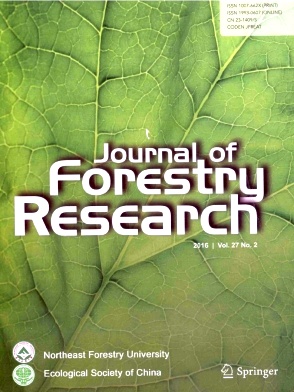当前位置: 首页 > 文章 > Identification of ISSR markers linked to flowering traits in a representative sample of Eucalyptus cladocalyx
林业研究(英文版)
2016,27
(2)
Position: Home > Articles > Identification of ISSR markers linked to flowering traits in a representative sample of Eucalyptus cladocalyx
Journal of Forestry Research
2016,27
(2)
Identification of ISSR markers linked to flowering traits in a representative sample of Eucalyptus cladocalyx
作 者:
Rodrigo Iván Contreras‐Soto;Paulina Ballesta;Eduardo Ruíz;Freddy Mor
单 位:
Department of Botany, University of Concepción, Concepción, Chile;Department of Agronomy, State University of Maringá, Maringá, Brazil;Institute of Biological Sciences, University of Talca, Talca, Chil
关键词:
Eucalyptus cladocalyx;ISSR;Flowering traits;Marker-assisted selection;GENETIC CORRELATIONS;STEM STRAIGHTNESS;LINKAGE MAP;SNP MARKERS;POPULATION;HERITABILITY;COEFFICIENT;ADAPTATION;INFERENCE;GLOBULU
摘 要:
Early flowering and flower abundance have long been considered desirable traits in eucalypt breeding programs. In particular, flowers of Eucalyptus cladocalyx provide a nectar source for the production of honey in arid ecosystems. To identify inter-simple sequence repeat (ISSR) markers that are associated with early flowering and flower abundance in the southern Atacama Desert, we used a sample of 47 trees, representing five Australian provenances of E. cladocalyx. A unified mixed linear model (which considered the effect of genetic structure and the kinship relationship among trees) revealed that three loci were significantly associated with early flowering, which accounted for 10-16 % of the phenotypic variation, while two loci accounted for 11-13 % in flowering intensity. Locus ISO1-500 bp was associated with both flowering traits. This result is consistent with our previous findings indicating that marker-assisted selection on early flowering should have significant and positive impact on flowering intensity. The application of marker-assisted selection to identify trees that flower early and intensively may increase honey production, a resource that generates additional income for the local farmers of the southern Atacama Desert.




